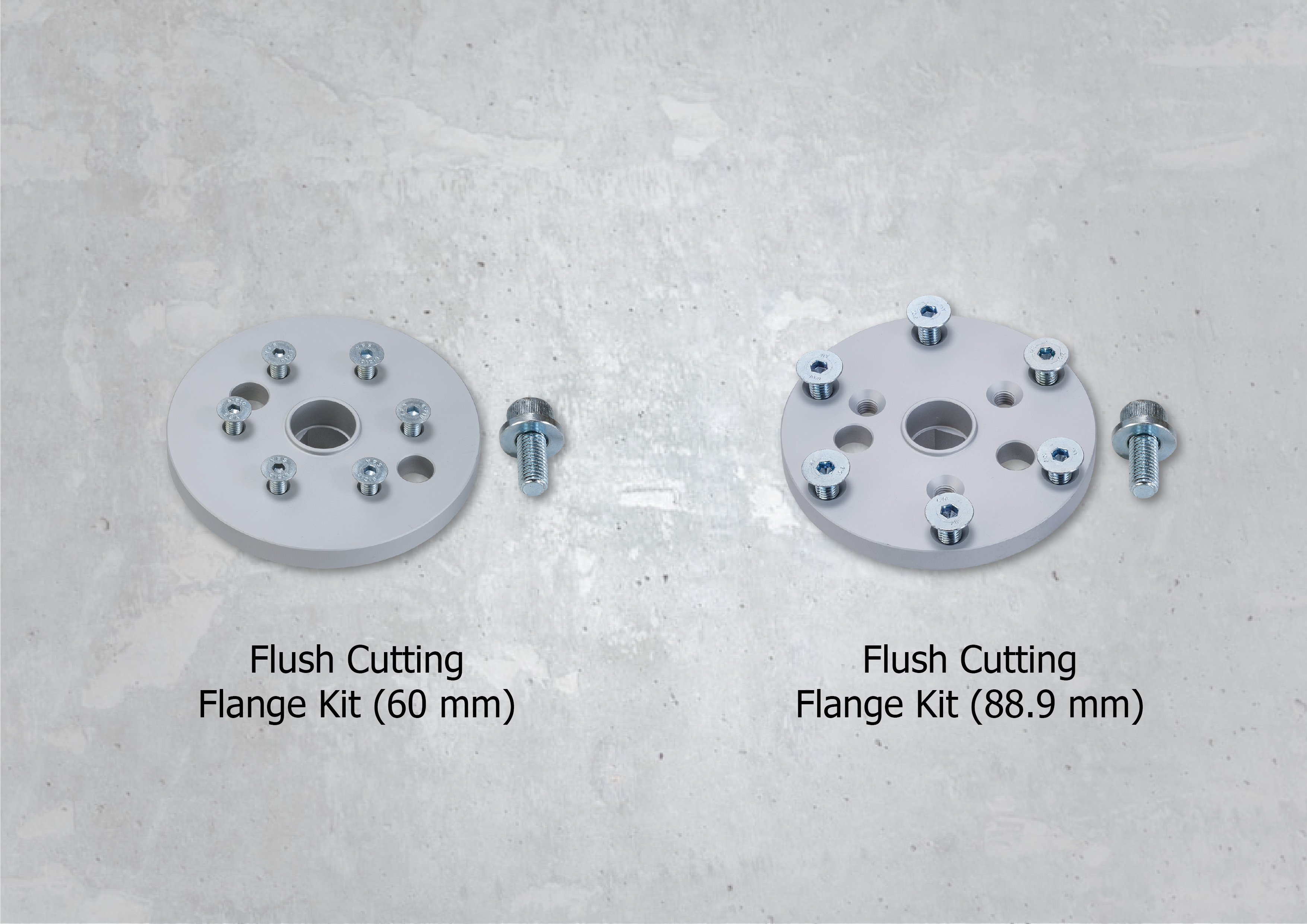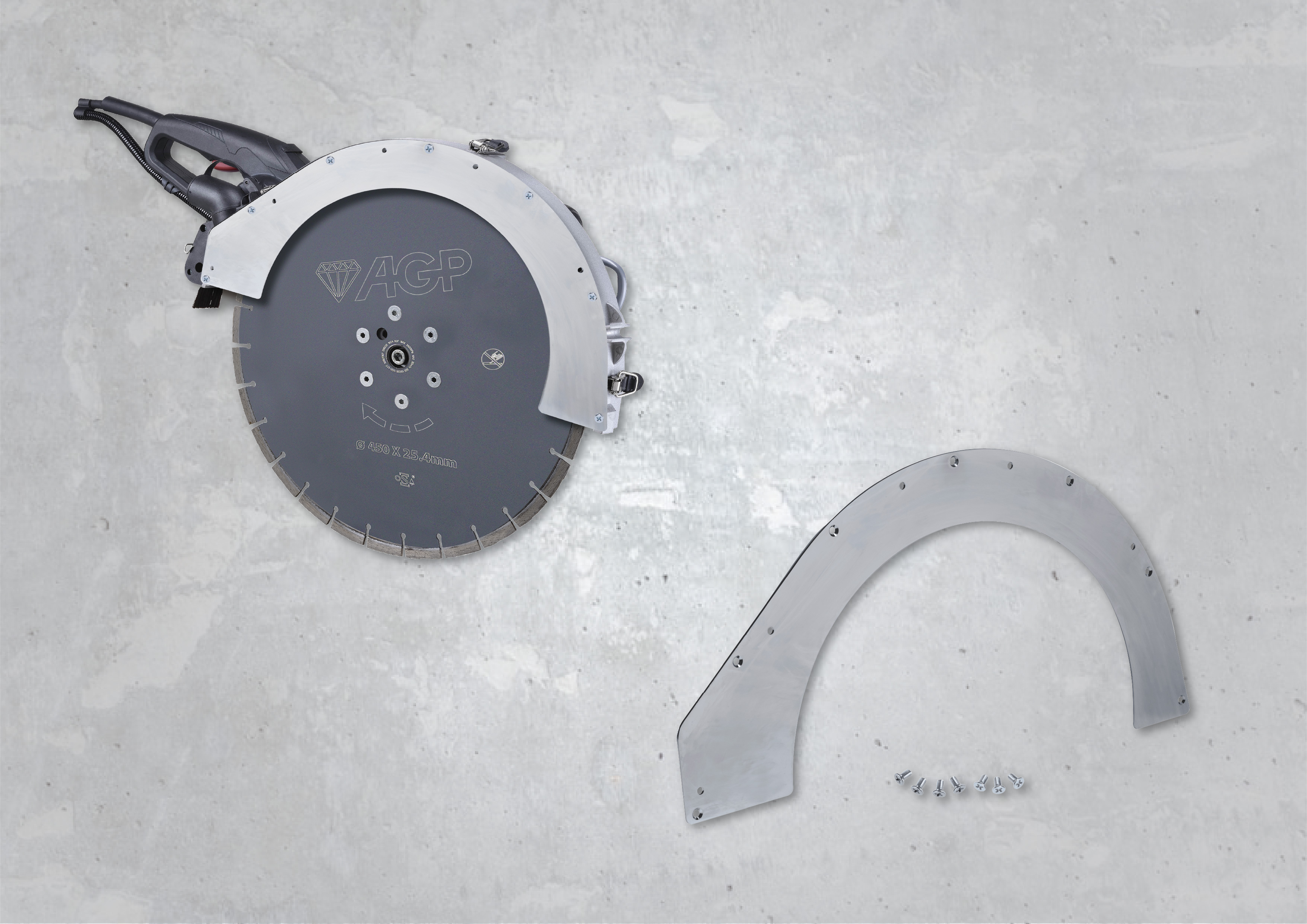November 7, 2025
Flush cutting with diamond tools is a specialized technique where the diamond blade is mounted so that it can cut right up against a surface (like a wall or floor) without leaving an offset.
This is made possible by using flush-mount flanges and special blades.
Main Benefits of Flush Cutting with Diamond Tools

Typical Applications
•Wall-to-floor or wall-to-wall precision cuts
•Cutting expansion joints right against a wall or curb.
•Trimming door thresholds or floor slabs without damaging adjacent finishes.
•Removing embedded objects flush with the surrounding surface.
•Creating smooth transitions for flooring or new installations.
What types of tools can perform flush cutting?
1. Some hand-held diamond saws
2. Wall saws
3. Some diamond chainsaws
General Rules of Thumb
•Hand saw flush cutting: For quick, mobile, shallow to medium-depth jobs.
•Wall saw flush cutting: For deep, long, highly precise structural cuts.
•Chainsaw flush cutting: For quick, mobile, deep cuts,
Flush Cutting with a Hand Saw
Best when:
•Small to medium cuts (bolts, pipes, door thresholds, floor edges).
•Limited workspace where larger machines can’t fit.
•Mobility is important (e.g., working on scaffolding, ceilings, or confined areas).
•Fast, flexible adjustments are needed on site.
Limitations:
•Depth of cut is limited (often 125–150 mm depending on blade size).
•Harder to maintain perfectly straight lines over longer distances.
•Operator fatigue (requires steady hands and safety precautions).
Typical Applications:
•Cutting anchors or dowels flush with floor/wall.
•Short cuts in concrete/masonry where a neat finish is needed.
•Repairs, modifications, or demolition tasks in tight spots.
Flush Cutting with a Wall Saw
Best when:
•Large-scale, deep, and structurally precise flush cuts are needed.
•Cutting openings (doors, windows) where edges must be perfectly straight.
•Continuous flush cuts along walls, floors, or ceilings.
•High accuracy and reduced vibration are important (minimizing structural stress).
Limitations:
•Requires more setup time (track, power supply, water system).
•Less mobile — not ideal for small one-off adjustments.
•Higher cost vs hand-held saws.
Typical applications:
•Creating flush openings in reinforced concrete walls/floors.
•Long precision cuts along structural joints.
•Situations requiring controlled demolition (no overcutting, minimal dust/slurry escape).
Flush Cutting with a Chainsaw
Best when:
•Cuts requiring deeper depth than is possible with a hand saw or where a wall saw can’t fit.
Limitations:
•Because of the high cost of consumables, operators only use a chainsaw when there is no other choice.
•Due to the slight offset at the drive sprocket area, a true flush cut is not possible all the way to fully plunged. (The flexibility of the guide bar allows a true flush cut for most of the depth.)
Typical Applications:
•Only cuts which are not possible with a hand saw.

What is the Difference Between a Standard Blade and a Flush Cut Blade?
Standard Diamond Blade:
• A standard blade has only one central arbor hole for mounting with standard flanges.
• The outer flange and blade guard leave an offset, making flush cutting not possible.
Flush Cut Diamond Blade:
• A flush cut blade has 6 countersunk holes for mounting to a flush cut flange.
• It also has a central arbor hole for mounting with standard flanges if desired.
• It has reinforced steel core to resist torsion from its offset mounting.
• Since they can only be mounted one way, they are available in right-hand and left-hand rotation versions. (AGP saws are all right-hand rotation)

Which 2 Types of Flanges Does AGP Offer for its Hand Saws?
• 6 countersunk screws for 60 mm bolt hole circle (more common in Europe)
• 6 countersunk screws with 3-½” (88.9 mm) bolt hole circle + 3-bolt pattern (more common in America)

Extra Circumferential Cover
• For hand saw flush cutting kits, an additional cover is provided.
• This gives added protection from debris and slurry from ejecting sideways at high speed.
Which machines does AGP offer for Flush cutting?
• C16 hand saw
• C16 + Accutrack saw track system
• HC16 high frequency hand saw
• HC18 high frequency hand saw
• CS14 chainsaw
• HCS19 high frequency chainsaw






.png)





.png)








